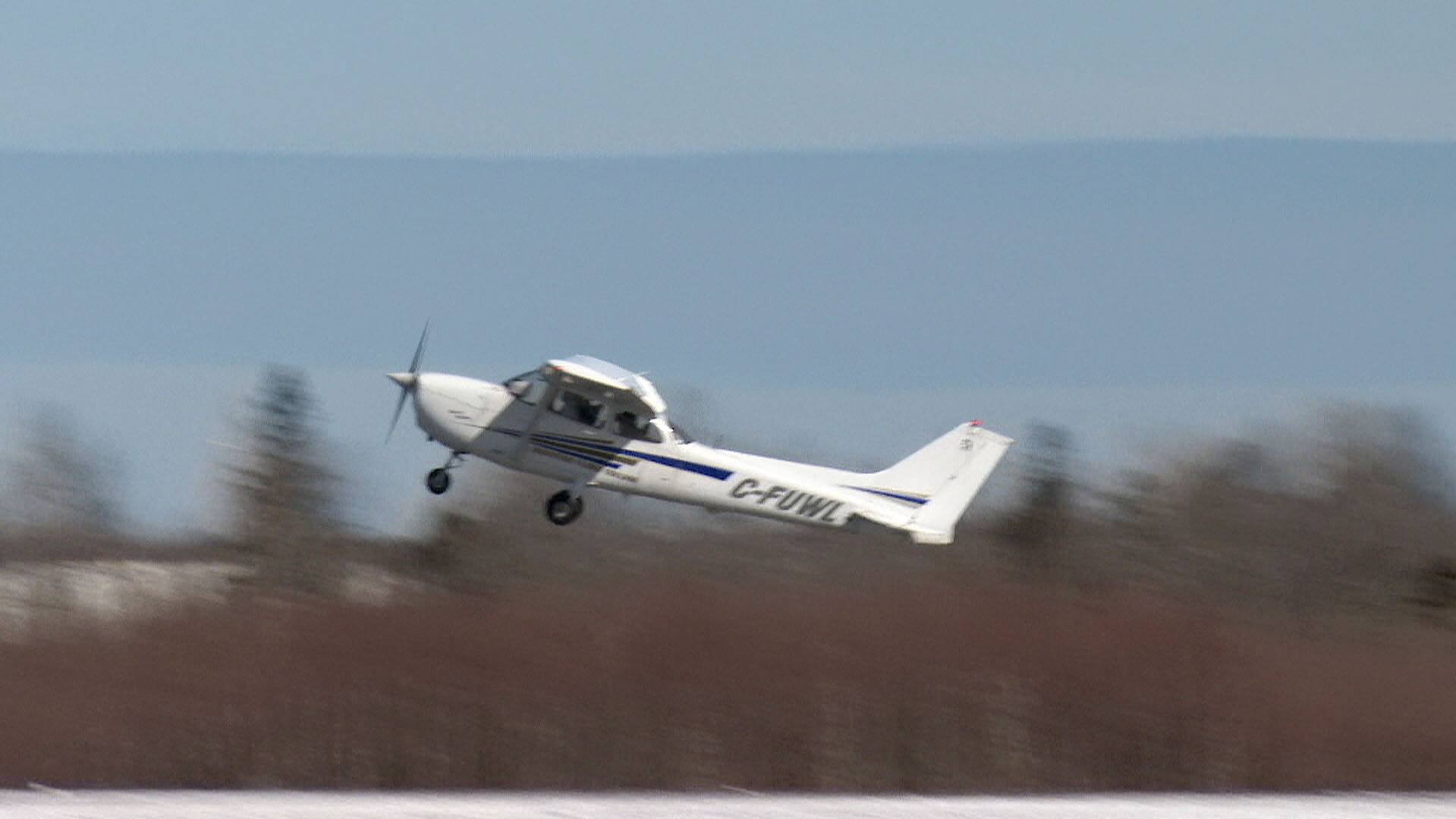A new course partnership between Salisbury’s J.M.A. Armstrong High School and MFC Training gives students a chance to take flight – and take the controls.

Pilot Tim Holt guided a group of students through each step of his pre-flight checklist on the edge of the runway, then invited them to climb aboard the aircraft and fasten their seatbelts.
With blue skies overhead, their fourth visit to MFC Training flight college in Dieppe, just east of Moncton, finally resulted in clear flying conditions – with a bit of gusty wind.
The three prospective pilots and their instructor sped down the flight college runway, gaining speed, lifting off and setting a precedent – the first flight in New Brunswick as part of a high school class.
Holt, who has been an instructor for three years, said it was a thrill to take them up.
“In the air one of the students took the controls and they were flying,” he said, noting the student said it was “harder than they expected it to be.”
The new aviation course, offered at J.M.A. Armstrong High School, is offered in partnership with MFC Training.
Inspired by a similar program in Woodstock, it focuses primarily on the ground school requirements for obtaining a private pilot’s licence.
WATCH / High school aviation program taking off

These N.B. high schoolers are learning how to become pilots
A new course partnership between Salisbury’s J.M.A. Armstrong High School and Moncton Flight School gives students a chance to take flight – and take the controls. 1:52
It all started when local pilot Jim Lockyer suggested the idea of an aviation course to his neighbour, Jill Tippett, a teacher at the high school.
A partnership was formed with the flight college and the high school began offering the class in January.
The credits the students earn in ground school count as both high school credits and towards a modular pilot’s licence, if they chose to continue their training.
They learn about meteorology, engines, flight theory, navigation and Canadian aviation regulations – all the basics required by Transport Canada. There’s also discussion of the impact of human factors such as fatigue, stress and medical issues.

Holt said the time in the classroom is a good introduction to how much work goes into a career as a pilot.
“I like to joke that aviation is equal parts paperwork and flying,” he said.
“It takes a lot of preparation, knowing what the weather’s going to be, knowing the route you’re about to take, knowing how the weather’s going to affect that route.”
Hands-on experience
The aviation students spent a full day visiting MFC Training in Dieppe on Wednesday, putting the theory they’d been learning in the classroom into practice.
Anna Paradis, experiential learning coordinator for the Anglophone East School District, said the visit offered an “unbelievable” opportunity to learn outside of the classroom.
“We’ve never had students in high school going up in airplanes, so it’s the first time it’ll ever happen in New Brunswick, which is really exciting,” she said.
“Hopefully we’ll be able to provide the same opportunity to other districts that have an aviation program as well.”

The students spent time going up in the air with Holt, learning about aircraft maintenance, practising with a flight simulator and touring the campus.
Grade 12 student Ryan McDermott was behind the controls in the cockpit of the simulator, where he took off over Greater Moncton and then came in for a landing – one of the few to successfully complete a landing on the first try.
“It’s different when you’re just doing it on paper, you’ve got more time to think about it,” McDermott said.
“When you’re in there, you’re just on the spot – you have to know.”
Growing aviation sector
McDermott said his experience in the course has piqued his interest in a career in air traffic control.
He’s not alone.

Holt said several students are showing interest in pursuing careers in the field after graduation.
As COVID-19 restrictions are loosened around the world, pent-up demand for air travel is starting to take off. That’s pushing pressure on short-staffed airlines and airports to fill positions are routes are added.
Holt said the industry is projected to grow and create demand for aviation jobs ranging from pilots to air traffic controls.
“It doesn’t just have to be an airline job, it could be a flight instructor job, it could be a bush job, it could be firefighting,” he said.
“It’s fantastic. It’s something that when I was in high school I really wish I had the opportunity to do.”

